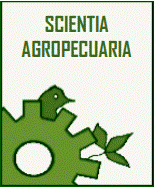High throughput sequencing for the detection and characterization of new virus found in arracacha (Arracacia xanthorrhiza)
Arracacha is a root crop cultivated in several countries of South America. The commercial product, which is the storage root, has multiple nutritional properties: its fine starch makes it easily digestible, and it contains high levels of calcium and vitamin A. High throughput sequencing (HTS) technology has been applied successfully for virus discovery in different agricultural crops, and it has been proposed to apply it in routine pathogen detection. Using HTS, novel sequences related to crinivirus and vitivirus were identified in apparently symptomeless arracacha, which were assembled into contigs located in different positions of the genome. Based on those sequences’ primers were designed to amplify corresponding sequences from further arracacha accessions and potato plant samples collected from farmers’ fields in Colombia and Peru. It was possible to determine the near complete genomes of these viruses. In addition, sequences related to an enamovirus and ST9-like RNA were also identified in arracacha plants using HTS.

